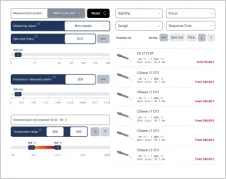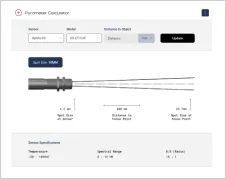
Active Thermography
Passive thermography differs from active thermography in that the focus is not on measuring temperature. Instead, active thermography is used to detect structural defects beneath the surface of an object. This non-destructive technique, also known as “lock-in thermography,” is highly effective for identifying material defects such as cracks, fraying, inclusions, delamination, or other irregularities that are not visible to the naked eye or standard cameras.
The basic principle involves introducing a short burst of high-energy electromagnetic radiation into an undamaged object. In an ideal, uninterrupted object, the resulting thermal energy flow within the object is isotropic, meaning it is uniform in all directions. It’s also expected that any point on a uniform surface will cool down at the same rate after being thermally stimulated.
However, if there is an invisible crack beneath the surface, the uniform energy flow inside the object is disrupted or reflected to the surface. As a result, the area surrounding the defect takes longer to cool down after being stimulated. In some cases, the presence of foreign material can enhance energy flow, leading to faster cooling.
In practice, energy is introduced into the object using a pulsed flash of light. Other energy sources such as microwaves, ultrasound, or eddy currents can also be used. The energy must be sufficiently high to raise the surface temperature. Any deviations from a uniform temperature are detected using a sensitive thermal imaging device. Adjusting parameters such as intensity, pulse intervals, pulse width of the energy source, and the phase between stimulation and measurement provides a wide range of possibilities for revealing hidden subsurface features.
Back to Lexicon
Talk to us about your IR Temperature Measurement Requirements
Our Infrared Temperature Measurement experts can help you find the right Optris product for your application.


